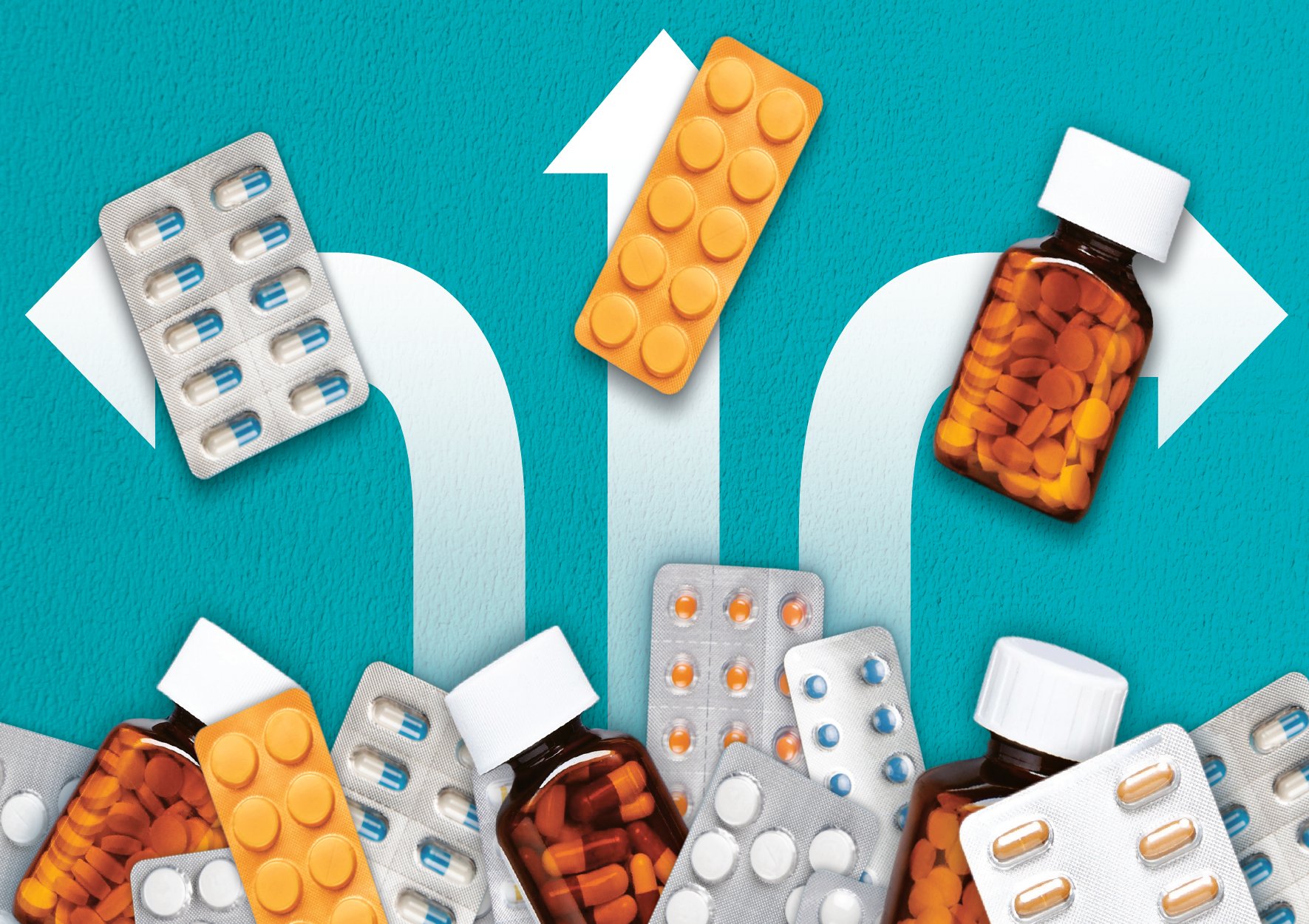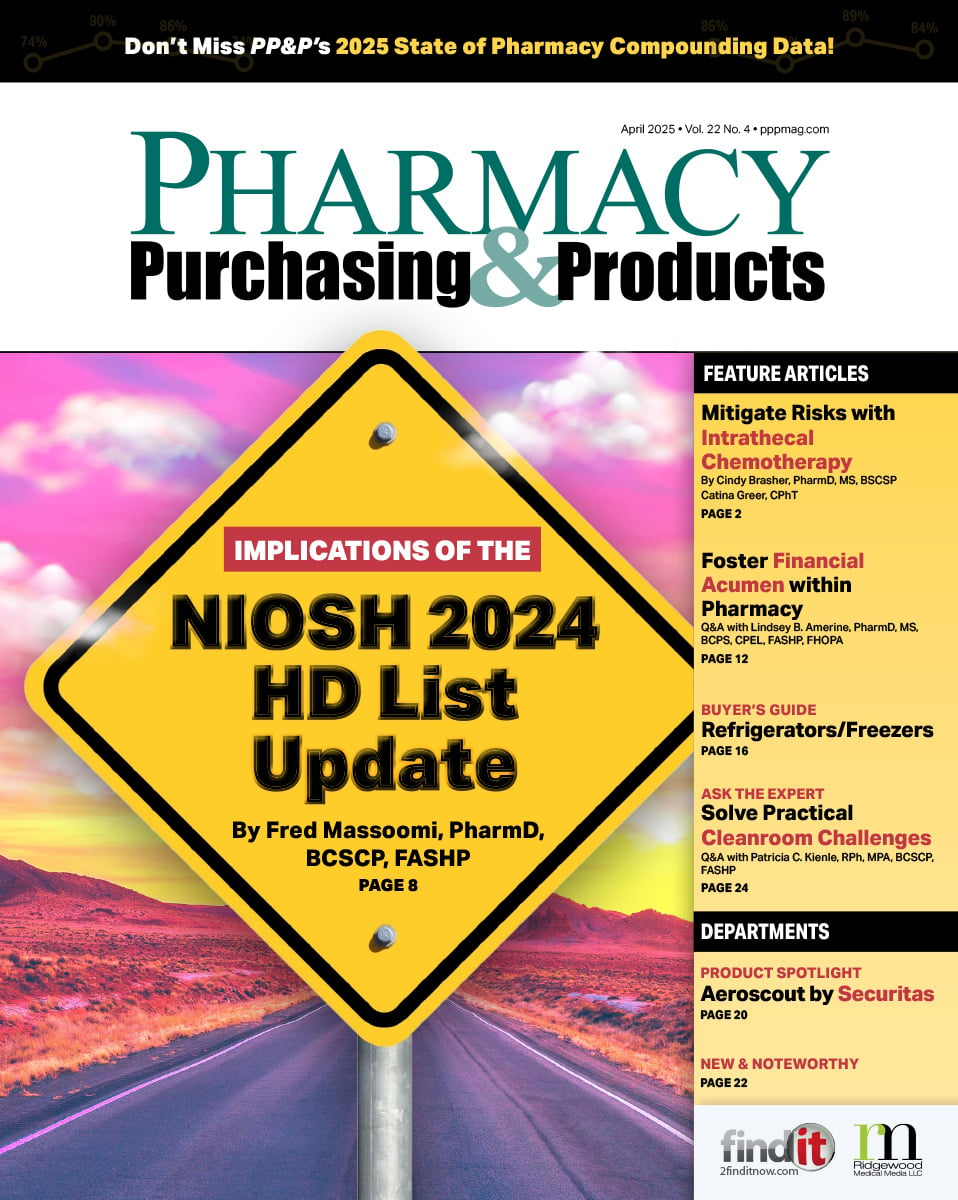- Show Menu
- Contact Us
- FAQs
- Reader Service
- Survey Data
- Survey Winners
- Testimonials
- Upcoming Events
- Webinars
- White Papers
Obtain the Best IVIG Product for Your Formulary
Intravenous immune globulin (IVIG) is consistently one of the most costly items on inpatient and outpatient pharmaceutical budgets at many medical centers in the United States. Given the wide use of these agents and their high cost, a successful approach to acquisition contracting has the potential to achieve significant cost avoidance and is an issue worthy of close review from pharmacy purchasers and pharmacy leadership.
With the increasing number of IVIG products available on the US market from various manufacturers, the potential for competitive contract negotiation is significant. However, while all these products contain immune globulin G and all IVIG products are highly purified and considered safe, they each have distinct pharmaceutical differences preventing simple interchange as would be allowed between generic versions of other pharmaceutical products. Moreover, making a formulary change from one product to another would have significant operational implications, as each product’s utilization is conditional. These elements must be considered when evaluating products.
The clinical and administrative factors that determine the best product for a single hospital or health-system formulary are unique depending on a number of factors—and perhaps most important—these elements are likely to change over time as new products become available in the market or therapeutic use within a health system evolves.
Pharmaceutical Equivalence of Products
From a pharmacy purchasing perspective, an important first step when evaluating a formulary agent is to determine which IVIG products could be considered clinically interchangeable within a given facility. Due to the pharmacological differences between the products, this is not a simple interchange process and certainly should be addressed before negotiating with manufacturers. Simply obtaining a low price for a product could be superfluous if prescribers deem the product unacceptable, making conversion to that product unworkable.
Clinically, all currently available products contain immune globulin G, but there are relevant differences between the products, such as sodium content, stabilizer, osmolality and osmolarity, immune globulin A content, infusion rates, concentration, and pH (see Table 1). The differences between products may be more significant or relevant given the patient population receiving the treatment, and some products are more pharmaceutically similar than others.1 Furthermore, certain prescribers may be more concerned about these differences than others. Accordingly, it is essential to work with your prescribers and gain consensus as to accepted interchangeable formulary agents before moving forward with any substitution processes or procedures. For example, at Yale-New Haven Hospital, our prescribers considered the liquid 10% products clinically interchangeable due to similarities between sodium content, stabilizer, osmolality and osmolarity, immune globulin A content, infusion rates, concentration, and pH. While there are differences between the stabilizing agents of the products, these differences were deemed to have little clinical relevance. However, such decision-making could vary among institutions depending on the aforementioned prescriber preferences and the types of patients being treated, as well as the formulary agent that is already established.

Click here to view a larger version of this Table
In addition to the clinical differences, there are important operational considerations that should be accounted for as well. Several IVIG products are available as liquids and are ready for immediate use without manipulation while other products are lyophilized and require reconstitution. Having a product available in a ready-to-use, unit-of-use form may provide significant logistical advantages that should be factored into the decision-making process. To illustrate, a liquid product may be supplied to a clinic and stored in an automated dispensing cabinet, whereas a lyophilized product requires reconstitution and pooling into an evacuated container for administration to the patient. Such an admixture process likely would also require special admixture facilities such as a cleanroom, technician labor, and pharmacist supervision leading to additional utilization costs that should be factored into any cost comparisons. On the other hand, it is conceivable that a lyophilized product may have an acquisition cost low enough to make these differences less compelling.
Product Availability
The availability of a specific IVIG product itself can influence product selection and this is applicable in terms of the vial sizes provided by the manufacturer as well as impairment of availability as a result of supply disruptions. If an institution has a large pediatric population and the manufacturer’s smallest vial size is 5 grams, this could lead to a large amount of product waste. Dose rounding may help avoid waste to some extent, but this is a particularly difficult situation if the patient population often requires dosing in the lower ranges (<10 grams). In this example, using vial sizes of 1 or 2.5 grams can greatly reduce the potential for significant IVIG waste.
Unfortunately, IVIG supply disruptions have been fairly common over the last few decades. While there is a relative overabundance of IVIG available today, that balance can quickly shift in the event of a large recall, a disruption of blood supply, or if a new FDA-approved use for IVIG leads to significant increased demand for the product. To help mitigate the risk of supply disruption, when negotiating with a manufacturer, include supply guarantees as a key element of the contract negotiation. For example, a facility’s commitment to use a given product could be balanced with an assurance from the manufacturer that they will maintain a specific supply volume in the event of a shortage. Similar commitments vary among manufacturers, and may require additional conditions, but including such a provision would prove valuable if and when a supply disruption occurs.

Impact of Contracting on Other Plasma Products
When negotiating with a manufacturer or supplier on the price of IVIG, it is important to recognize that the IVIG contract may be bundled with other plasma products, such as albumin. The bundling of these products can create a significantly beneficial impact on the per-unit price. The best result would be to ensure that cost savings are obtained on each line item individually. In addition, product bundling also may be important from the standpoint of maintaining access to an albumin supply that meets your institution’s usage needs. Albumin supply disruptions also are common and maintaining that product supply line deserves careful consideration.
Inpatient vs Outpatient Formulary Changes
Changing IVIG products on the inpatient formulary can be a relatively straightforward process depending on the products selected after consulting with and gaining buy-in from prescribers. However, since IVIG products are not simply generic versions of each other, there are additional operational considerations that must be addressed when changing from one product to another in the outpatient setting. All IVIG products, except Gamunex C and Gammaked, are identified with different J codes for billing. In order to change an IVIG product for an outpatient, a new prescription and separate insurance authorization must be obtained to ensure product coverage. This patient finance consideration adds another logistical component to conversion between products, as there is a risk of insurance-provider coverage denial if another product is administered without first obtaining proper authorization. In short, the acquisition cost savings quickly become irrelevant if you do not obtain reimbursement for the administration of the IVIG from the insurance provider.
Purchasing Options
When establishing a contract for IVIG acquisition, the purchase route should also be considered as it varies among manufacturers. IVIG purchases can be made directly from the manufacturer, via a group purchasing organization (GPO), and/or through special pharmacy distribution networks, such as Cardinal Specialty Distributors, McKesson Specialty Care, and CuraScript. The chosen method can have a significant impact on pharmacy budgets, the terms of which often can be negotiable as well.
Purchases made directly from the manufacturer or from a specialty distributor may require more proactive work on the part of the pharmacy to keep track of invoices, payments, inventory, and supply needs, but if a facility has the requisite resources to ably do so, greater control over the process can be exercised and savings realized. On the other hand, when purchasing via a GPO, the GPO can handle many of these tasks; however, there may be order rate commitments that must be maintained over time to avoid contract penalties. In addition, purchasing though a GPO may lead to other volume discounts that should be considered in the overall evaluation and also may represent the established supply chain at a given institution.
Of note, when it comes to IVIG procurement, it is not uncommon for facilities to use a hybrid approach where 340B product is purchased directly from the manufacturer and non-340B product is purchased via a GPO or special distribution network. This does require more resources to manage, though. Moreover, if you choose to carry more than one product on formulary, the purchasing method may be different for each product depending on the manufacturer.
Best Contract Pricing
Once the clinical and operational considerations have been accounted for, it is time to establish the best acquisition price. A common place to start is with your GPO, as these organizations can help purchasers realize drug cost savings and create procurement advantages for a hospital or health system by aggregating purchasing volume and using that leverage to negotiate discounts with manufacturers and distributors. Smaller hospitals especially can benefit from a GPO relationship, mainly due to the volume aggregation. However, if a hospital uses a large volume of IVIG or if the negotiation is done on behalf of a large health system, you may be able to negotiate better pricing on your own, rather than through the GPO. Regardless, the GPO route offers a good reference point when embarking on direct-to-manufacturer negotiations.
Should you decide to pursue direct negotiation with the manufacturer, it is important to make it clear to all potential product providers that you are serious about making a change in formulary product and bids from all acceptable manufacturers should be solicited. As you begin the bidding process, be sure to inform the product manufacturers as to your decision-making drivers. Examples of drivers include price per gram, volume commitments or allocations, availability of 340B product, impact on other plasma product contracting, etc. Once you have the competing proposals in hand, you can fine tune the offers and complete your product selection.
340B Products
Participation in the 340B drug pricing program often presents significant cost saving opportunities for covered entities, and IVIG is a prime example where particular savings can be obtained. However, the purchase of plasma products at 340B prices is not as straightforward as with other pharmaceutical products. The ability to source IVIG product at 340B pricing levels does not necessarily correspond with the overall availability of product supply.2 In essence, pharmacy purchasers may find that even though an IVIG product is widely available in the general marketplace, there may be limited or no access to a 340B supply of that same product.
To overcome this challenge, it is important to establish the availability of a desired 340B product with the manufacturer when determining which IVIG products to include on formulary, as the 340B price most likely will be lower than any possible negotiated price. Moreover, depending on a facility’s mix of 340B versus non-340B product use, the availability of a 340B IVIG product may drive the overall financial decision-making at a given institution. In my experience, the availability and pricing of 340B products varies greatly among manufacturers, and the reasons for these differences are not readily transparent. Availability may range from zero, to an allocation situation, to full ability to meet the 340B needs of the purchaser. As 340B products may represent significant savings for an eligible entity, and given that it is not advisable to routinely change patients between products, 340B product availability should be established before making a commitment to any single or workhorse formulary product.
Conclusion
There is substantial opportunity for cost savings with IVIG procurement for hospitals and health systems, but there are several clinical, operational, and purchasing considerations that must be evaluated before committing to a formulary conversion between products. Many of these considerations are institution- and manufacturer-specific, so the ultimate choice of formulary product will vary among facilities following a thorough analysis of these options. Access to 340B products also will vary based on the facility and the chosen or desired manufacturer, so it is worthwhile to explore these conditions as part of your overall evaluation. Given that IVIG use is likely to continue to rise in the coming years, thoughtful contemplation of this expensive product is a valuable course of action.
References
- Siegel J. The product: all intravenous immunoglobulins are not equivalent. Pharmacotherapy. 2005;25(11 Pt 2):78S-84S.
- Public Hospital Pharmacy Coalition. Access to IVIG by Safety Net Hospitals Participating in the 340B Drug Discount Program. Published September 2006. http://www.phpcrx.org/public/documents/pdfs/IVIG_report.pdf Accessed February 15, 2012.
 Eric Tichy, PharmD, BCPS, is a clinical pharmacy specialist in solid organ transplant at Yale-New Haven Hospital in New Haven, Connecticut. He is a graduate of the University of Connecticut School of Pharmacy and trained in pharmacy practice at Yale-New Haven Hospital. Eric also is board-certified in pharmacotherapy and holds adjunct faculty appointments at the University of Connecticut School of Pharmacy and Duquesne University Mylan School of Pharmacy. A member of the heart, kidney, and liver transplant teams at Yale-New Haven Transplantation Center (YNHTC), Eric serves as director of the YNHTC transplant pharmacy residency.
Eric Tichy, PharmD, BCPS, is a clinical pharmacy specialist in solid organ transplant at Yale-New Haven Hospital in New Haven, Connecticut. He is a graduate of the University of Connecticut School of Pharmacy and trained in pharmacy practice at Yale-New Haven Hospital. Eric also is board-certified in pharmacotherapy and holds adjunct faculty appointments at the University of Connecticut School of Pharmacy and Duquesne University Mylan School of Pharmacy. A member of the heart, kidney, and liver transplant teams at Yale-New Haven Transplantation Center (YNHTC), Eric serves as director of the YNHTC transplant pharmacy residency.
Like what you've read? Please log in or create a free account to enjoy more of what www.pppmag.com has to offer.








